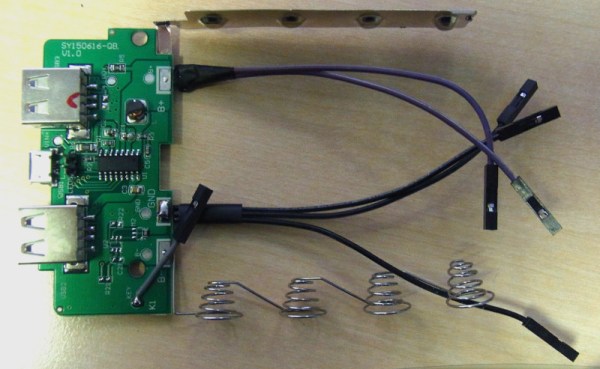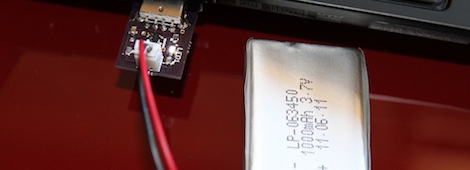Nothing brings joy to a hacker’s heart like taking a cheap gizmo and making it useful. Over at Hackaday.io [AndyHull] popped open some cheap LiPo battery power packs to see if he could power a Canon Powershot camera. The entire shebang would be left in the wilderness for photography so keeping it inexpensive was a big goal since it might be destroyed or lost.

The power packs [Andy] looked at have a TP4221 controlling the charge cycle for up to four 18650 LiPo cells connected in parallel. The controller also boosts the voltage to 5 volts for one or two USB ports while providing automatic shutdown if the LiPo cell voltage drops below 3.2v. Below that voltage the cells can be damaged and might possibly cause a fire.
The packs [Andy] used also had a torch output to drive an LED almost directly from the cells. That output is a nominally 3.8 V at 100 mA which is just what he needed to power the Canon Powershot. It could be used to power small micros or other low power devices.
The LED was removed and replaced by a connection to outside the pack. The torch output is triggered by two quick presses on a switch that was also replaced with a connector to allow remote control.
If you’re looking for powerful battery options, give LiPo a try and have a look at [Andy]’s LiPo battery safety issues post, also on Hackaday.io. For a broader LiPo overview, see this obsessive rundown of various batteries.


















